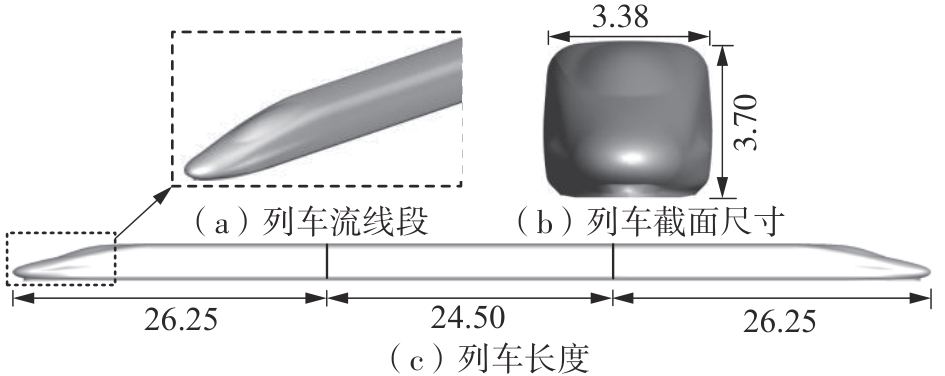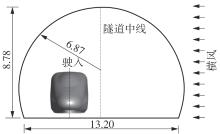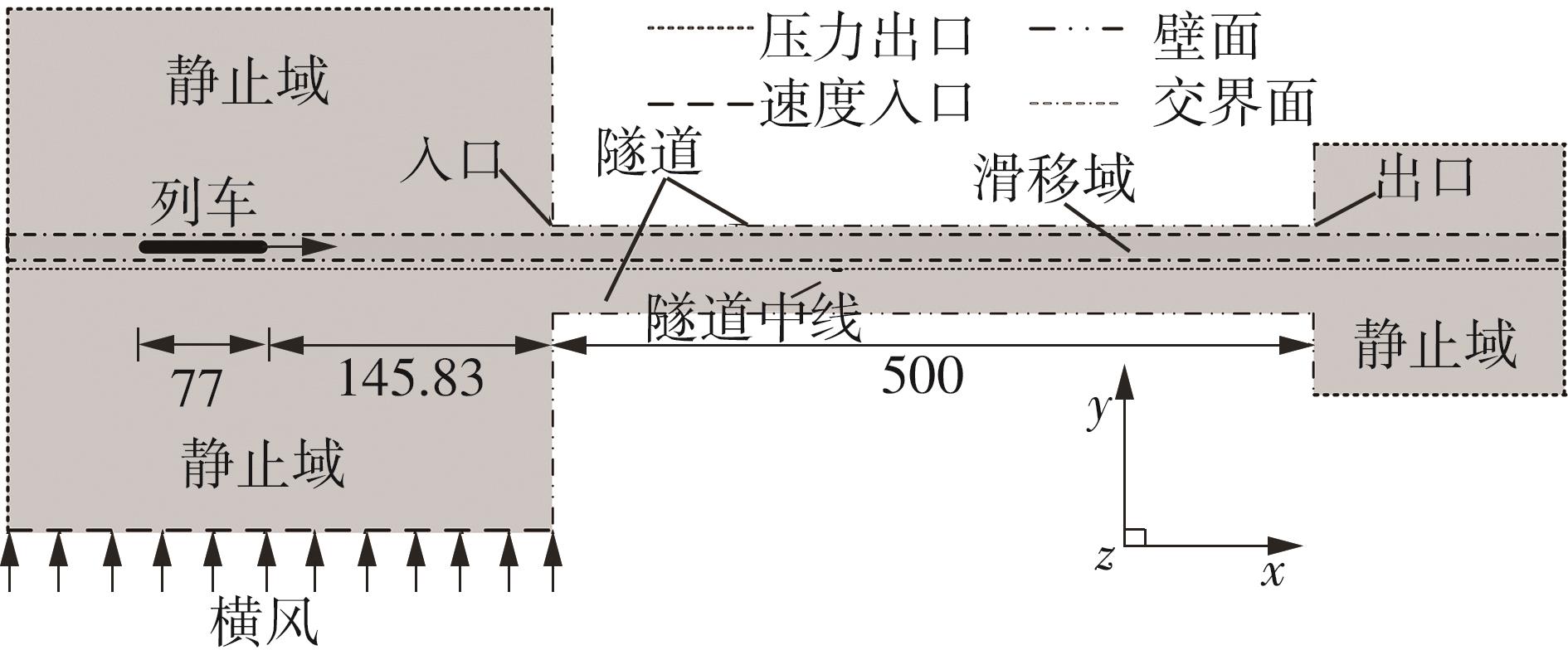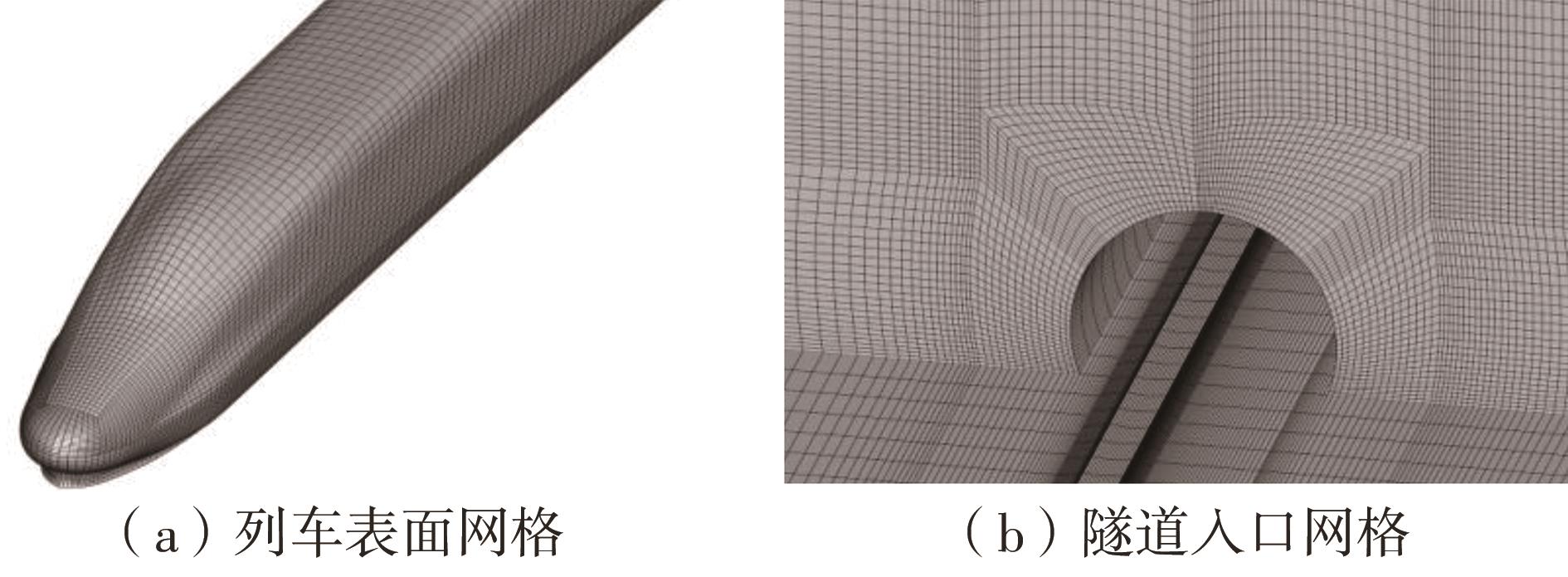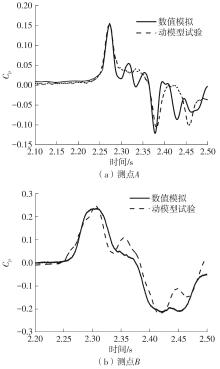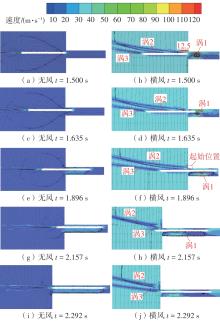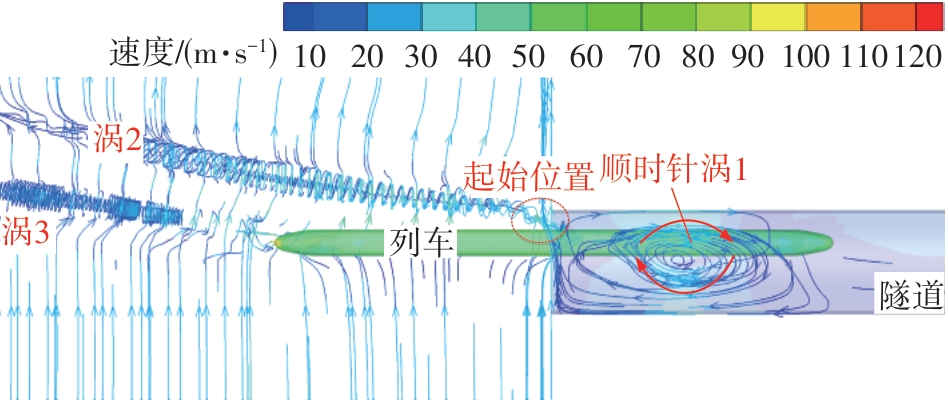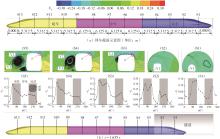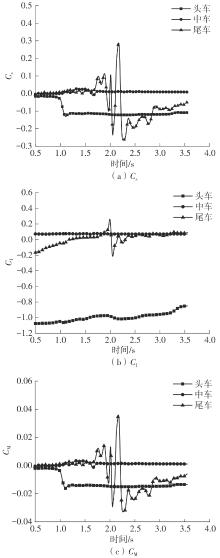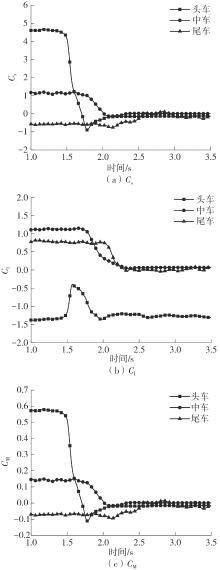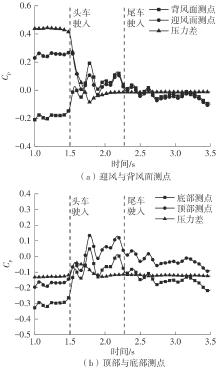Journal of South China University of Technology(Natural Science Edition) ›› 2024, Vol. 52 ›› Issue (11): 141-150.doi: 10.12141/j.issn.1000-565X.230430
Special Issue: 2024年智慧交通系统
• Intelligent Transportation System • Previous Articles
Analysis on Crosswind Effects of a High-Speed Train Breaking into a Double-Track Tunnel
WANG Lei1,2,3 TAN Zhongsheng1,2 LUO Jianjun1,2 LI Yujie3 LI Feilong4 SHANG Suying5
- 1.Key Laboratory of Urban Underground Engineering of the Ministry of Education,Beijing Jiaotong University,Beijing 100044,China
2.Beijing’s Key Laboratory of Structural Wind Engineering and Urban Wind Environment,Beijing Jiaotong University,Beijing 100044,China
3.Beijing Subway Operation Co. ,Ltd. ,Beijing 100044,China
4.China Airport Planning and Design Institute,Beijing 101312,China
5.Beijing Xinqiao Technology Development Co. ,Ltd. ,Beijing 100088,China
-
Received:2023-06-20Online:2024-11-25Published:2023-09-08 -
Contact:骆建军(1971—),男,博士后,教授,主要从事高铁隧道空气动力学研究。 E-mail:jjluo@bjtu.edu.cn -
About author:王磊(1987—),男,博士,工程师,主要从事高铁隧道空气动力学研究。E-mail: 17115298@bjtu.edu.cn -
Supported by:the National Natural Science Foundation of China(52378386)
CLC Number:
Cite this article
WANG Lei, TAN Zhongsheng, LUO Jianjun, et al. Analysis on Crosswind Effects of a High-Speed Train Breaking into a Double-Track Tunnel[J]. Journal of South China University of Technology(Natural Science Edition), 2024, 52(11): 141-150.
share this article
| 1 | 鲁寨军,王甲强,梁习锋,等 .横风下车体运动对高速列车气动性能的影响[J].铁道科学与工程学报,2023,20(7):2419-2430. |
| LU Zhaijun, WANG Jiaqiang, LIANG Xifeng,et al .Effect of car-body vibration on the aerodynamic performance of high-speed trains under crosswind conditions[J].Journal of Railway Science and Engineering,2023,20(7):2419-2430. | |
| 2 | BAKER C J .The simulation of unsteady aerodynamic cross wind forces on trains[J].Journal of Wind Engineering and Industrial Aerodynamics,2010,98(2):88-99. |
| 3 | LUO J, WANG L, SHANG S,et al .Study of unsteady aerodynamic performance of a high-speed train entering a double-track tunnel under crosswind conditions[J].Journal of Fluids and Structures,2023,118:103836/1-19. |
| 4 | KHIER W, BREUER M, DURST F .Flow structure around trains under side wind conditions:a numerical study[J].Computers and Fluids,2000,29(2):179-195. |
| 5 | 王政,李田,张继业 .不同类型横风下高速列车气动性能研究[J].机械工程学报,2018,54(4):203-211. |
| WANG Zheng, LI Tian, ZHANG Jiye .Research on aerodynamic performance of high-speed train subjected to different types of crosswind[J].Journal of Mechanical Engineering,2018,54(4):203-211. | |
| 6 | WANG Y, SUN Z, JU S,et al .Robust optimisation of the streamlined shape of a high-speed train in crosswind conditions[J].Engineering Applications of Computational Fluid Mechanics,2023,17(1):2234012/1-16. |
| 7 | GUO Z, LIU T, CHEN Z,et al .Study of the flow around railway embankment of different heights with and without trains[J].Journal of Wind Engineering and Industrial Aerodynamics,2020,202:104203/1-11. |
| 8 | LI S, LI Z, YANG Q,et al .The scale effect of the wind tunnel test on the drag force of a stationary train under crosswinds[J].Journal of Wind Engineering and Industrial Aerodynamics,2023,238:105425/1-18. |
| 9 | LI Y, ZHANG J, ZHANG M,et al .Aerodynamic effects of viaduct-cutting connection section on high-speed railway by wind tunnel tests[J].Journal of Aerospace Engineering,2019,32(5):05019002/1-9. |
| 10 | MONTENEGRO P A, HELENO R, CARVALHO H,et al .A comparative study on the running safety of trains subjected to crosswinds simulated with different wind models[J].Journal of Wind Engineering and Industrial Aerodynamics,2020,207:104398/1-15. |
| 11 | YAO Z, ZHANG N, CHEN X,et al .The effect of moving train on the aerodynamic performances of train-bridge system with a crosswind[J].Engineering Applications of Computational Fluid Mechanics,2020,14(1):222-235. |
| 12 | HASHMI S A, HEMIDA H, SOPER D .Wind tunnel testing on a train model subjected to crosswinds with different windbreak walls[J].Journal of Wind Engineering and Industrial Aerodynamics,2019,195:104013/1-19. |
| 13 | 杨伟超,赵文,邓锷,等 .高铁挡风墙端部2种缓冲结构的气动性能对比[J].中南大学学报(自然科学版),2022,53(5):1941-1954. |
| YANG Weichao, ZHAO Wen, DENG E,et al .Comparative study on aerodynamic performance of two buffer structures at the ends of high-speed railway windbreak[J].Journal of Central South University(Science and Technology),2022,53(5):1941-1954. | |
| 14 | WANG M, LI X, XIAO J,et al .Effects of infrastructure on the aerodynamic performance of a high-speed train[J].Proceedings of the Institution of Mechanical Engineers,Part F:Journal of Rail and Rapid Transit,2020,23(6):1791156491/1-11. |
| 15 | 张业,孙振旭,姚永芳,等 .典型路基结构对高速列车横风气动特性影响分析[J].机械工程学报,2018,54(4):186-195. |
| ZHANG Ye, SUN Zhenxu, YAO Yongfang,et al .Influence of typical subgrade structures on aerodynamic characteristics of high speed trains in cross wind conditions[J].Journal of Mechanical Engineering,2018,54(4):186-195. | |
| 16 | 张景钰,张明金,李永乐,等 .高速铁路路堤-路堑过渡段复杂风场和列车气动效应风洞试验研究[J].工程力学,2019,36(1):80-87. |
| ZHANG Jing-yu, ZHANG Ming-jin, LI Yong-le,et al .Wind tunnel test study on complex wind field and vehicle aerodynamic effects in embankment- cutting transition zone in high-speed railway[J].Engineering Mechanics,2019,36(1):80-87. | |
| 17 | 毛军,韩晨煜,陈明杲 .横风桥隧区域列车突出隧道时的瞬态气动特性[J].华南理工大学学报(自然科学版),2023,51(2):54-64. |
| MAO Jun, HAN Chenyu, CHEN Minggao .Transient aerodynamic characteristics of train exiting from bridge tunnel area under cross wind[J].Journal of South China University of Technology(Natural Science Edition),2023,51(2):54-64. | |
| 18 | 牛纪强,周丹,李志伟 .强风局部地貌下高速列车非定常气动性能[J].中南大学学报(自然科学版),2015,46(6):2359-2365. |
| NIU Jiqiang, ZHOU Dan, LI Zhiwei .Unsteady aerodynamic performance of high-speed train on local geomorphology under strong wind[J].Journal of Central South University (Science and Technology),2015,46(6):2359-2365. | |
| 19 | WANG L, LUO J, LI F,et al .Aerodynamic performance and flow evolution of a high-speed train exiting a tunnel with crosswinds[J].Journal of Wind Engineering and Industrial Aerodynamics,2021,218:104786/1-14. |
| 20 | 苗秀娟,张雷,李志伟,等 .强横风下列车出隧道时的瞬态气动性能[J].中南大学学报(自然科学版),2014,45(3):958-964. |
| MIAO Xiujuan, ZHANG Lei, LI Zhiwei,et al .Aerodynamic performance of train passing out tunnel under cross-wind[J].Journal of Central South University (Science and Technology),2014,45(3):958-964. | |
| 21 | 邓锷,杨伟超,尹荣申,等 .横风下高速列车驶入隧道时瞬态气动性能研究[J].湖南大学学报(自然科学版),2019,46(9):69-78. |
| DENG E, YANG Weichao, YIN Rongshen,et al .Study on transient aerodynamic performance of high-speed trains when entering into tunnel under crosswinds[J].Journal of Hunan University (Natural Sciences),2019,46(9):69-78. | |
| 22 | 王磊,骆建军,李飞龙 .横风下高速列车突入隧道瞬变压力及列车风[J].振动与冲击,2022,41(3):27-36. |
| WANG Lei, LUO Jianjun, LI Feilong .Transient pressure and train wind during high-speed train entering a tunnel under crosswind[J].Journal of Vibration and Shock,2022,41(3):27-36. |
| [1] | YANG Yi, WANG Zhe, ZHANG Zhiyuan. LES Study on the Influence of Streamlined Accessories on the Wind Loads of TTU Model [J]. Journal of South China University of Technology(Natural Science Edition), 2025, 53(2): 136-148. |
| [2] | ZHANG Binyu, WANG Yigang, YU Wuzhou, et al. Experimental Study on the Noise and Transmission of Automobile Door Sealing Cavity [J]. Journal of South China University of Technology(Natural Science Edition), 2024, 52(9): 104-114. |
| [3] | FU Helin, CHANG Xiaobing, HU Kaixun. Stability Analysis of Shallow Buried Tunnel Under Nonlinear Failure Criterion [J]. Journal of South China University of Technology(Natural Science Edition), 2024, 52(7): 107-118. |
| [4] | TANG Qianlong, PENG Limin, DENG E, et al. Safety of Existing Intersection High-Speed Railway Trains Under the Condition of Sheild Tunnel Penetration Construction Considering the Stochastic Field [J]. Journal of South China University of Technology(Natural Science Edition), 2024, 52(4): 95-103. |
| [5] | WEI Haibin, WEI Dongsheng, JIANG Boyu, et al. Prediction Analysis of Settlement of Existing Road Under Shield Tunneling Based on IPSO-SVR [J]. Journal of South China University of Technology(Natural Science Edition), 2023, 51(6): 62-71. |
| [6] | YANG Yi, WANG Xin, JI Changhui. Wind Tunnel Test Research on the Effect of Rough Strips on Wind Loads of A Super High-Rise Building [J]. Journal of South China University of Technology(Natural Science Edition), 2023, 51(4): 1-8. |
| [7] | ZHAO Xiaohua, DONG Wenhui, LI Jia, et al. Influence Characteristics and Action Mechanism of Tunnel Traffic Signs Based on Driving Behavior [J]. Journal of South China University of Technology(Natural Science Edition), 2023, 51(4): 88-100. |
| [8] | HUANG Juan, LONG Haofeng, ZHOU Shijie, et al. Dynamic Damage Characteristics of Large Section Tunnel Lining Under Seismic Load [J]. Journal of South China University of Technology(Natural Science Edition), 2023, 51(4): 124-134. |
| [9] | MAO Jun, HAN Chenyu, CHEN Minggao . Transient Aerodynamic Characteristics of Train Exiting from Bridge Tunnel Area Under Cross Wind [J]. Journal of South China University of Technology(Natural Science Edition), 2023, 51(2): 54-64. |
| [10] | TIAN Lifeng, GUO Meiqi, DING Hao, et al. On Aero-optical Effect and Control of Supersonic Boundary Layer [J]. Journal of South China University of Technology(Natural Science Edition), 2023, 51(2): 137-146. |
| [11] | DU Jianming, FANG Qian , WANG Gan, et al. Characteristics of Transient Pressure and Pressure Gradient of a High-Speed Train Travelling Through a Double-Track Tunnel [J]. Journal of South China University of Technology(Natural Science Edition), 2022, 50(9): 58-68. |
| [12] | DU Jianming, FANG Qian, LI Jianye. Influences of Train to Tunnel Area Ratio on Aerodynamic Pressure Characteristics of High-Speed Railway Tunnel Wall [J]. Journal of South China University of Technology(Natural Science Edition), 2022, 50(5): 56-64. |
| [13] | HUANG Si, ZHANG Guoran, TANG Zirui, et al. Fluid-Solid Coupling Analysis of Spherical Storage Tank under Wind Load [J]. Journal of South China University of Technology(Natural Science Edition), 2022, 50(2): 67-75. |
| [14] | JIANG Wangtao, JIANG Haiqiang, MA Qinguo, et al. Unified Elasto-Plastic Solution for Cold Regions Tunnel Considering Damage and Non-Uniform Frost Heave [J]. Journal of South China University of Technology (Natural Science Edition), 2022, 50(1): 69-79, 100. |
| [15] | XI Yanhong, QU Shuqiang, MAO Jun, et al. Research on Behavior Characteristics of Flame Ejected from Broken Glass in Tunnel Train Fire Accident [J]. Journal of South China University of Technology (Natural Science Edition), 2021, 49(5): 56-64. |
| Viewed | ||||||
|
Full text |
|
|||||
|
Abstract |
|
|||||

